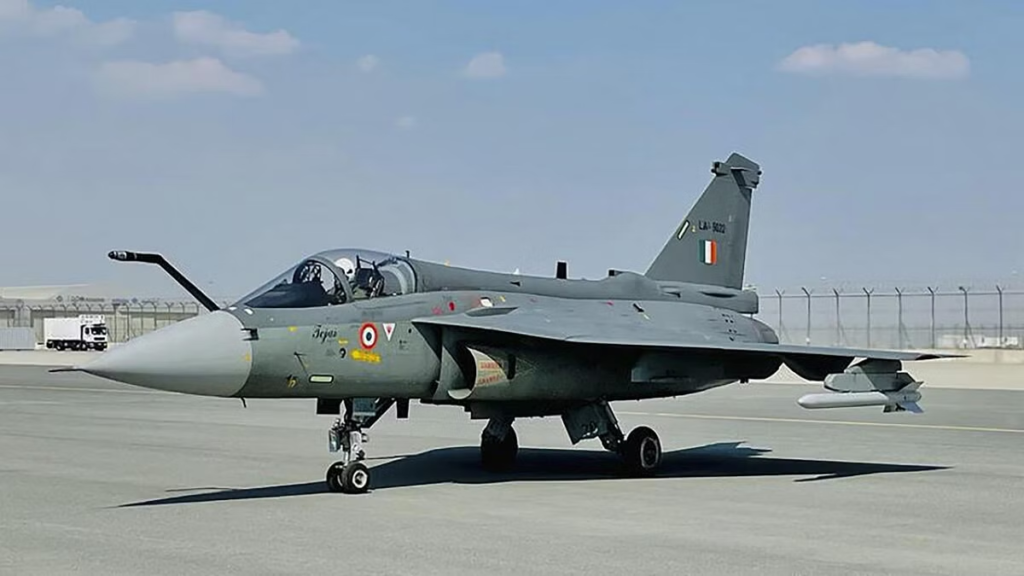On a recent operational training sortie in Jaisalmer, a Tejas Light Combat Aircraft (LCA) of the Indian Air Force crashed, marking the first such incident since its maiden flight 23 years ago. Despite this setback, the indigenous jet has maintained a commendable accident-free track record throughout its development phase. This article delves into the details of the recent crash, the Tejas LCA’s history, achievements, and the ongoing advancements in its design and capabilities.
The crash occurred during an operational training sortie, with the pilot successfully ejecting from the aircraft. The Indian Air Force (IAF) promptly initiated a Court of Inquiry to determine the cause of the accident. Interestingly, the incident took place during the Bharat Shakti tri-service firepower demonstration exercise, witnessed by Prime Minister Narendra Modi. As per Rahul Singh of the Hindustan Times, the aircraft flew before the Prime Minister minutes before the crash.
Early findings point towards engine failure as the probable cause of the crash. Defence officials suggest that while more details will be revealed after a thorough inquiry, the pilot had communicated to the ground station about the engine issue before initiating ejection. This marks the first time in 23 years that the indigenous fighter has faced a crash, prompting the Indian Air Force and relevant agencies to launch a detailed investigation.
In response to the incident, the Indian Air Force released an official statement: “A Light Combat Aircraft (LCA) Tejas of the Indian Air Force crashed near Jaisalmer today during an operational training sortie. The pilot ejected safely. A Court of Inquiry has been ordered to ascertain the cause of the accident.” This emphasizes the IAF’s commitment to investigating and understanding the circumstances surrounding the crash.
In an attempt to shed light on the recent Light Combat Aircraft (LCA) Tejas crash in Jaisalmer, detailed observations reveal intriguing aspects of the incident. Geo-location efforts indicate that the aircraft was on its final approach toward the runway for landing, with the video capturing the crucial moment just 5km from the designated landing site.
The landing gears were deployed at the time of the incident and strikingly, even after the pilot’s ejection, the aircraft displayed an unexpected stability, gracefully gliding through the air. Initial indicators and reports suggest a gradual loss of power, placing the aircraft at a significantly lower altitude before any recovery efforts could be implemented. These observations contribute to the complexity of the ongoing investigation, prompting a closer examination of the circumstances leading up to the crash and emphasizing the need for a thorough analysis, which will be done in Court of Inquiry (CoI).
Despite the crash, it’s important to note that the Tejas aircraft has amassed over 5000 hours of safe flying, showcasing its reliability and endurance in various weather conditions. This unfortunate incident provides an opportunity for the aircraft manufacturer to conduct an in-depth analysis, gathering valuable data to enhance the machine’s performance further.
Notably, the Tejas is equipped with built-in recovery strategies, exemplified by its Tejas Control Levels, which encompass a range of functionalities ensuring pilot assistance and safety. These levels include Pilot Assisted features like Carefree Maneuvering and warnings for low and high speeds, as well as Pilot Delegated capabilities such as basic autopilot and auto-throttle modes. Additionally, the aircraft offers Pilot Supervised functions like Track Mode and Auto Approach, while advanced features like Disorientation Recovery Function and Fully Autonomous Auto Low Speed Recover provide comprehensive safety measures.
As investigations proceed, it’s imperative to await the findings based on technical analysis, factual evidence, and inference, rather than engaging in speculation. This approach ensures a thorough understanding of the incident and informs future improvements in the Tejas program.
